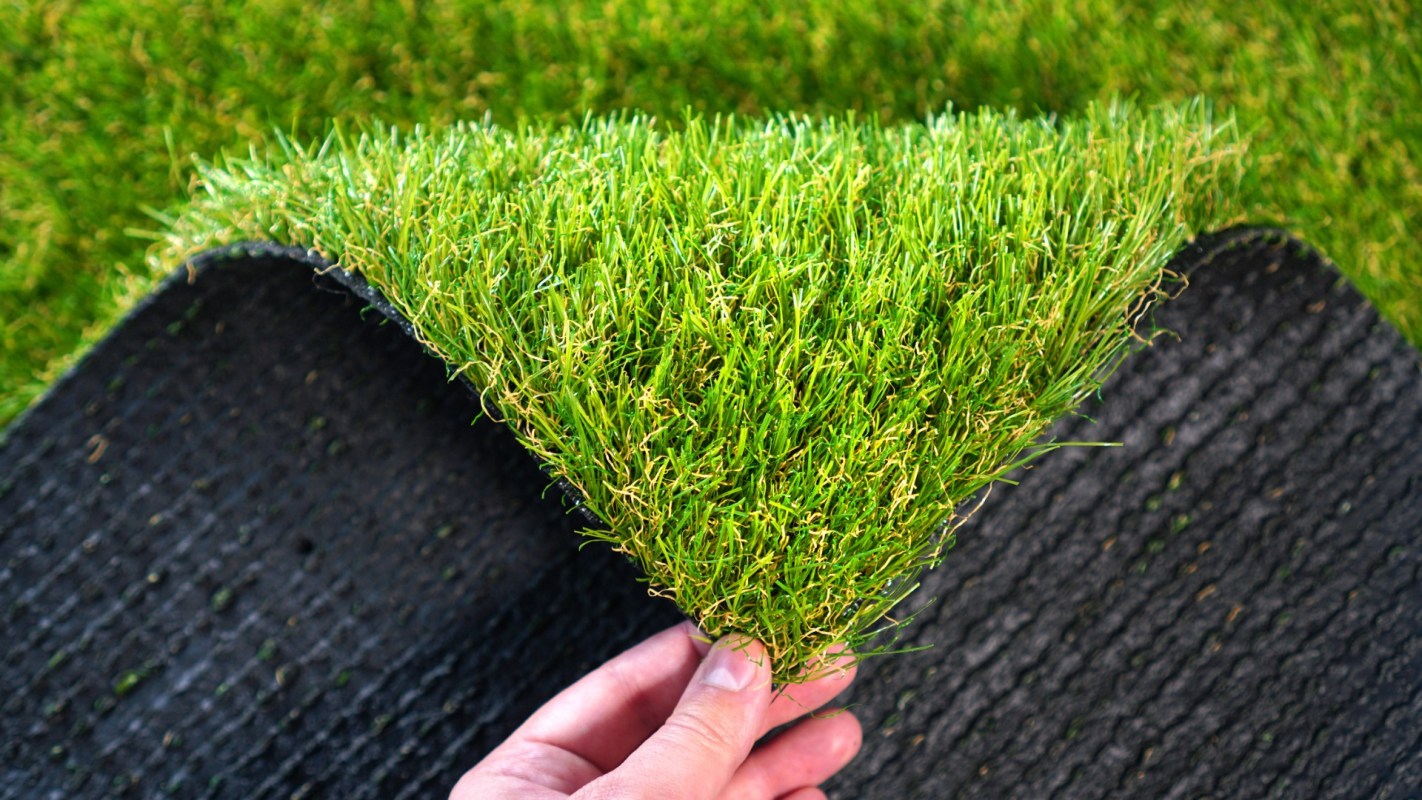There is a growing awareness that traditional grass lawns — the type that stay perfectly green and keep your neighbors or homeowners association (HOA) off your back — are not particularly beneficial for homeowners or the surrounding environment.
They need to guzzle water to stay green, which can cause your water bill to skyrocket. Grass lawns stifle native wildlife and, in many cases, involve the use of pesticides and herbicides that spread poison into the soil and surrounding waterways.
As a result, some people are turning to low-maintenance, no-water synthetic turf lawns instead. These, as it turns out, are not much better.
But there are far better options for you that offer the low-maintenance convenience of artificial turf while also being safer for your home and a friend to the environment.
What are synthetic turf lawns?
Synthetic turf lawns, also known as artificial turf or fake grass, are surfaces designed to resemble natural grass. They are made using synthetic materials, primarily plastic, to mimic the look and feel of real grass.
Synthetic turf is typically installed on a base of compacted soil or gravel and often includes a layer of infill material, such as rubber or sand, to provide stability and more cushioning.
Synthetic turf has gained popularity as an alternative to natural grass due to its low maintenance requirements and durability. It is commonly used for residential yards, sports fields, playgrounds, and commercial landscapes. Synthetic turf lawns are available in various colors and textures to mimic different grass varieties.
Why are synthetic lawns harmful?
Although synthetic turf can help you bypass some of the environmental problems that traditional grass lawns pose, such as herbicides and pesticides, excessive water usage, and gas-powered lawnmowers, that does not necessarily make them a wise choice for your home or the planet.
Synthetic grass is made out of plastic, which is made from oil, a dirty energy source. The production of plastic produces planet-warming gasses, which contribute to the overheating of our planet and can act like steroids for extreme weather events.
Synthetic grass also absorbs significantly more heat from the sun than living grass because it is made from plastic. This can cause a mini heat island effect on your property, which can even impact your home's temperature and cooling bills.
"Since [traditional] grass leaves release water vapor … and the evaporation of that water vapor leads to cooling, grass fields rarely get above 100 degrees Fahrenheit," explains the National Recreation and Park Association.
In contrast, Penn State University's Center for Sports Surface Research has found that on hot, sunny days, the maximum surface temperatures of synthetic turf averaged from 140 to 170 degrees Fahrenheit.
As our planet continues to overheat and summers get hotter and hotter, this problem only compounds itself.
Although many of the firms producing these fake lawns advertise that their products can be recycled, there is a disparity between whether turf can be recycled, in theory, and whether it actually does get recycled at the end of its life.
Plus, while traditional grass lawns are not the best at encouraging the biodiversity a thriving yard needs, turf lawns are far, far worse at the job.
"[Synthetic turf] blocks access to the soil beneath for burrowing insects, such as solitary bees, and the ground above for soil dwellers such as worms, which will be starved of food beneath it," Paul Hetherington, the director of a charity that focuses on saving insect populations, told The Guardian. "It provides food for absolutely no living creatures."
What should I do?
There is another alternative to traditional and turf grass lawns that is also growing in popularity: native plant lawns.
Growing plants that are native to the region where you live requires much less water, mowing, and pesticide use than a grass lawn. Native plants spent thousands of years adapting to your region's moisture level, soil, weather, and native wildlife, making them a dream to maintain and a friend to local wildlife.
Plus, native plant lawns tend to be far more interesting and beautiful than any flat strip of plain green grass. Sure, the swap might result in some squabbling with the HOA, but that seems like a fight worth having. You can learn more about incorporating native plants in your own yard here.
Other more environmentally friendly alternatives to grass lawns include buffalo grass and clover lawns.
Join our free newsletter for easy tips to save more, waste less, and help yourself while helping the planet.









